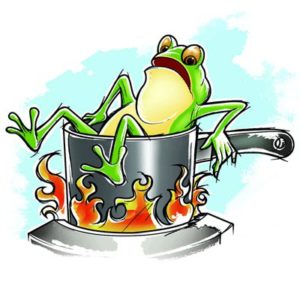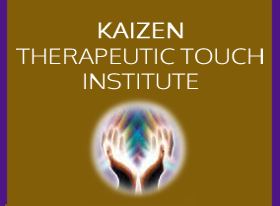 Every living system is equipped with two modes of being – growth or defence. Peace and harmony are requisite conditions for growth. When these conditions are right, the living system’s growth experience has characteristic qualities of flow, rhythm, strength and symmetry. Growth, however can be frustrated, hindered or arrested by stress, triggered into action by threats, perceived or real.
Every living system is equipped with two modes of being – growth or defence. Peace and harmony are requisite conditions for growth. When these conditions are right, the living system’s growth experience has characteristic qualities of flow, rhythm, strength and symmetry. Growth, however can be frustrated, hindered or arrested by stress, triggered into action by threats, perceived or real.
It is important to remember that the mind cannot tell the difference between what is real and what is imagined or perceived as real and will respond based on the information it receives. According to cellular biologist and author of The New Biology, Dr. Bruce Lipton,
“Our perception,
coloured by the beliefs we hold about the environment,
controls our behaviour.”
Understanding this reality is the first step necessary to realizing the critical role awareness and discernment play in perception. Foundational mindfulness practices of grounding, rooting and centering central to Therapeutic Touch training address this need.
Understanding the two primary protective systems inherent in our being – the stress response and the immune response (more about that in a future blog post), is helpful. Both of these responses, as everyone knows from experience, utilize life force energy which would otherwise be available for growth.
The Stress Response – All about Survival!
Stress is your experience of your body’s fight or flight response to stimuli whether internal (feelings, perceptions, beliefs) or external (temperature, sound, aggression). The stress response is the experience of an activated hypothalamus-pituitary-adrenal axis or HPA axis triggered by external threats, either perceived or real. It is the first protective system.
When there is no perceived external threat, the HPA axis is inactive, allowing cells to be in neutral or growth mode. Once a stress response is activated, it cannot be arrested and runs its course – stress hormones are released into the blood, constricting blood vessels to the digestive tract, organs and the prefrontal cortex in the brain – where functions of critical thinking, decision making, logic and creative problem solving originate. Increased blood flow is directed to the limbic or hindbrain, responsible for instinctual behavioural responses, as well as to the legs and arms to support the impulse to fight or flee in the face of danger. Our full attention is on survival!
The Physical Experience of Stress
- The entire system becomes more alert with body hair alert, all five senses and mental functioning more acute.
- Sugar is released into the blood stream creating more energy to fight off the stressor
- Cholesterol in the blood is increased to provide more energy when blood sugar levels drop off
- Red and white blood cells and clotting factors rush into the blood stream thickening the blood to help the body recover from injuries
- Adrenal glands release cortisone into the blood to protect from allergy reactions
- Pituitary gland releases endorphins (the body’s natural painkillers)
- Sex hormones diminish resulting in decreased libido
- Thyroid hormone (thyroxine) is released to boost metabolism (fueling fight or flight response)
- Heart rate increases pumping more blood to the lungs and muscles powering flight or fight response.
- Quickened breathing increases supply of air and more oxygen for the extra blood flowing through the lungs
- Digestive activity slows with energy moving into limbs
The stress response, effective in emergency situations, is often over-activated in everyday life by faulty perception, negative beliefs, and a culture at home or at work that riles, upsets, worries, frustrates or disturbs us – conditions that are non-conducive to growth.
Negativity Bias – A Threat to Opportunity Ratio of 5:1
 It is important to realize that the human brain has a negativity bias of 5:1, ie. we are 5x more attuned to threats than we are to opportunities!
It is important to realize that the human brain has a negativity bias of 5:1, ie. we are 5x more attuned to threats than we are to opportunities!
The real concern however, is that an over-taxed stress system holds the system as a whole hostage, forcing it into a rut – stuck in low function, causing harm to cells that result in imbalance, disorder, blockage and depletion which negatively impacts on performance, vitality and quality of life. An over-taxed stress system – one that’s always “on”, continually running, depletes life force energy, starving cells and weakens the system as a whole – think of how your computer crashes when you have too many files open and make too many competing demands.
A Weakened System is a Vulnerable System
Stress kills! Stress is a recognized cause of 80% of today’s illnesses including chronic fatigue, fibromyalgia, endocrine dysfunction, reproductive problems, hormone imbalances, heart disease, stroke, sleep disorders, digestive dysfunction, memory problems, excessive weight gain, “burn out” and many others.
Realizing that perception drives operations, ie. your perception of a situation, as threat, opportunity or neutral, determines how your system responds – whether you’ll activate the stress response, or whether you’ll be mindful and assess the situation fully before activating the stress response. The ability to “stop action” to pause, centre, ground and assess is a practiced skill that can be developed. It’s at the heart of my mindfulness coaching approach.
Keeping your system in balance is to keep it in “growth mode” rather than “defence or protective mode”. This, of course, is key to having the necessary energy available to make good decisions and live a mindful, authentic, compelling life.
As James Allen so eloquently quipped over 100 years ago,
“Man is made or unmade by himself.
By the right choice he ascends.
As a being of power, intelligence, and love,
and the lord of his own thoughts,
he holds the key to every situation.”
The Antidote to Stress is Relaxation
 Learning how to manage stress is a first good step to developing healthy self-care and lifestyle practices. It’s what motivated me to learn Therapeutic Touch®, a holistic healing modality, based on the idea that pain and disease are connected to disorders in the human energy system.
Learning how to manage stress is a first good step to developing healthy self-care and lifestyle practices. It’s what motivated me to learn Therapeutic Touch®, a holistic healing modality, based on the idea that pain and disease are connected to disorders in the human energy system.
Relaxation is the antidote to stress and creates the opportunity for healing to occur. The good news is that a relaxation response is typical within 2-4 minutes of the start of a Therapeutic Touch (TT) healing session. If you’re stressed or ill yourself, or if you know someone who is and you feel called to help, Therapeutic Touch training will give you the knowledge and tools you need to heal yourself and help others.





